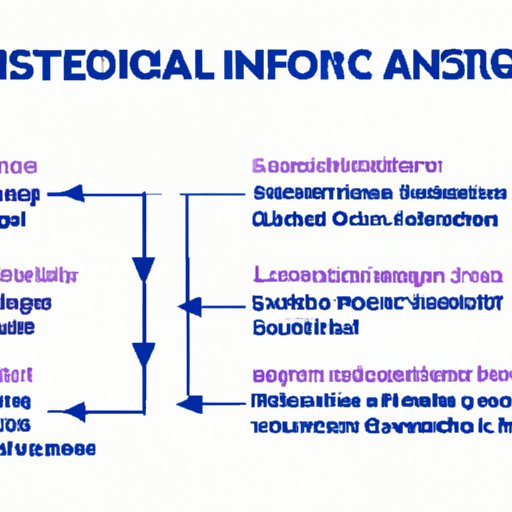Introduction
Instruction Set Architecture (ISA) is a critical component of computer systems that dictates how the machine interacts with software. It is an interface between the hardware and software of a computer, providing the system with instructions to perform certain operations. In this article, we will explore what Instruction Set Architecture is and how it works, as well as its purpose, benefits, and examples.

An Overview of Instruction Set Architecture: What it Is and How it Works
Before exploring the basics of Instruction Set Architecture, let’s start by defining what it is. Instruction Set Architecture is a particular set of commands and data formats used to create a computer program or application. It is a language that allows the computer to understand the instructions given to it by the programmer. The architecture consists of a set of instructions, which are known as the instruction set, that define the operations that a processor can execute.
Now let’s dive into how Instruction Set Architecture works. When a programmer codes a program, they write instructions in a programming language like Java or Python. These instructions are then compiled into machine code, which is a series of 0s and 1s that the processor can understand. This machine code is then executed on the processor using the Instruction Set Architecture. The processor reads each instruction from the machine code and executes it according to the instructions provided by the Instruction Set Architecture.

Exploring the Basics of Instruction Set Architecture
Let’s now take a look at the components of Instruction Set Architecture and how they work together. The most important component of the architecture is the instruction set. This is a set of instructions that define the operations that the processor can execute. Each instruction typically consists of an operation code, which tells the processor what operation to execute, and one or more operands, which provide the data for the operation. The instruction set also includes addressing modes, which determine how the processor accesses memory, and control flow instructions, which dictate the order in which instructions are executed.
In addition to the instruction set, Instruction Set Architecture also includes registers, which are small storage locations within the processor that temporarily store data. Registers are used to store data while a program is being executed, as well as to store the results of calculations or other operations. Finally, Instruction Set Architecture includes a bus interface unit, which is responsible for transferring data between the processor and other components of the system, such as memory and input/output devices.

A Guide to Instruction Set Architecture and Its Benefits
Now let’s discuss the advantages of Instruction Set Architecture. The primary benefit of Instruction Set Architecture is that it enables the processor to interact with software written in any programming language. By providing a common language that the processor can understand, Instruction Set Architecture makes it possible to run programs written in different languages on the same processor. Additionally, Instruction Set Architecture simplifies the design of processors, as the instruction set defines the operations that the processor must be able to execute.
In addition to simplifying the design of processors, Instruction Set Architecture also provides several performance benefits. By reducing the amount of time required to translate instructions from a high-level language into machine code, Instruction Set Architecture can improve the performance of programs written in any language. Furthermore, Instruction Set Architecture can optimize the execution of instructions by providing efficient instruction scheduling algorithms that help the processor execute instructions in the most efficient order.
Finally, Instruction Set Architecture can improve the reliability of programs by providing efficient error handling mechanisms. For example, some architectures include mechanisms that allow the processor to detect and handle errors that occur during program execution, such as invalid memory accesses or incorrect data types.
Exploring the Purpose of Instruction Set Architecture in Computing Systems
Now let’s discuss the role of Instruction Set Architecture in computing systems. As previously mentioned, Instruction Set Architecture provides an interface between the processor and the software running on it. It is responsible for translating instructions written in a high-level language into machine code that the processor can understand. Furthermore, Instruction Set Architecture is responsible for providing efficient methods of executing instructions, optimizing the performance of programs, and providing reliable error handling mechanisms.
Instruction Set Architecture is also responsible for providing an abstraction layer between the hardware and software of a computer system. By abstracting away the details of the underlying hardware, Instruction Set Architecture makes it easier for programmers to write programs without having to worry about the specifics of the hardware. Instruction Set Architecture also provides a platform for building complex operating systems and applications, as the architecture provides a standardized way of interacting with the hardware.
Conclusion
In conclusion, Instruction Set Architecture is an essential component of computer systems that enables the processor to interact with software written in any language. It consists of a set of instructions, addressing modes, and control flow instructions, as well as registers and a bus interface unit. Instruction Set Architecture provides several benefits, including simplifying the design of processors, improving performance, and providing reliable error handling mechanisms. Finally, Instruction Set Architecture provides an abstraction layer between the hardware and software of a computer system, enabling the development of complex operating systems and applications.
(Note: Is this article not meeting your expectations? Do you have knowledge or insights to share? Unlock new opportunities and expand your reach by joining our authors team. Click Registration to join us and share your expertise with our readers.)
